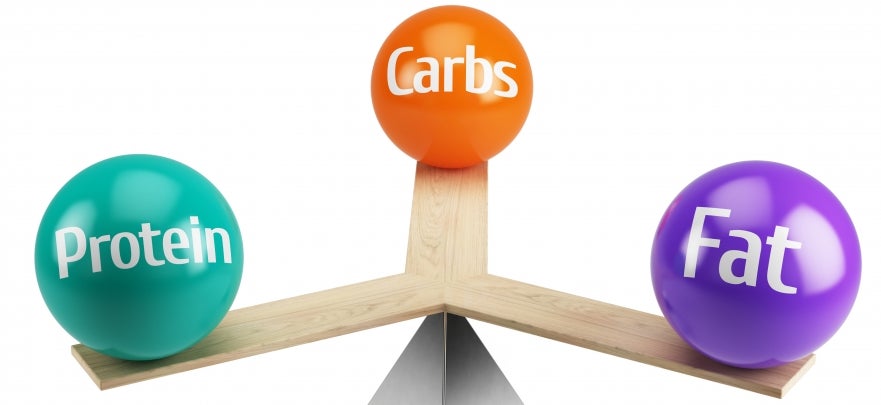Macronutrients: Fats, Carbs, Protein
When it comes to nutrition, there are macronutrients and micronutrients. The “big 3” macronutrients (macros) are fats, carbohydrates and protein. When eaten in the right ratios, these three macronutrients can improve your weight, health and overall physical well-being.
In general, most adults should target their diets to comprise of 45-65% Carbohydrates, 10-35% Protein and 20-35% Fat. (If you’re trying to lose weight, the number should be adjusted to 10-30% Carbohydrates, 40-50% Protein and 30-40% Fat.)
One of the problems with traditional calorie counting is that it doesn’t take into account the quality of what you’re eating. While portion control alone may work for the short term, unless you’re eating nutrient-rich foods that leave you satisfied, your self-control will eventually break down. Below you’ll find more information on how to get the most out of the macronutrients each day.
-
Carbohydrates: Carbohydrates (or “carbs”) often get a bad rap, but they are critical and the most accessible sources of energy for your body’s systems. What’s most important is the type of carbohydrate you choose to eat because certain carbs are healthier than others.
The healthiest sources of carbohydrates—unprocessed or minimally processed starches such as potatoes or yams, vegetables, fruits and beans. They promote good health by delivering vitamins, minerals, fiber, and a host of important nutrients. Unhealthier sources of carbohydrates include breads, pasta, pastries, sodas, and other processed or refined foods. These items contain quickly digested carbohydrates that have a high glycemic index; which contributes to weight gain, hormone imbalance, diabetes and heart disease. Your goal should be to eat whole food sources of carbohydrates such as vegetables, legumes and some fruit.
-
Protein: Well known in the world of fitness, protein is associated with building muscle and primarily found in foods like meat and eggs. However, protein is needed for more than just muscle growth. Protein is made up of many different amino acids which are the building blocks of organs, bones, hair, enzymes, and pretty much all of the tissues in your body.
Studies show that eating a high-protein diet has a number of health benefits. Not only does it help you maintain and lose weight, but it also works to stabilize your blood sugar levels, improve your ability to learn and concentrate, boost energy levels, support your muscles and bones, and support the absorption of important nutrients.
When choosing protein, be sure to select organic lean meats such as wild caught fish, free-range chicken, grass-fed beef, or plant sources such as nuts, seeds and beans. Limit your intake of processed proteins high in saturated fat such as conventional red meat, bacon, sausage, deli meats and hot dogs.
-
Fat: Fats are the most calorie-dense nutrient out there, but they’re very important to normal body functions, acting as the backbone to hormones, insulation for nerves, even skin and hair health.
While there are many types of fats (from saturated to monounsaturated to polyunsaturated), the main three you should be concerned about are trans fats, omega-3 fatty acids, and omega-6 fatty acids.
Trans fats are “bad fats” and have been consistently shown to increase the risk of coronary heart disease, and should generally be avoided. They’re usually found in packaged foods and various brands of margarine. (Quick tip: Don’t trust the front label of any food item. Instead, read the ingredient list and look for the words: hydrogenated or partially hydrogenated. This means the item has trans fat.
Omega’s 3, 6 and 9 fats are what’s known as Essential Fatty Acids, or “EFA’s”. Similar to essential amino acids, your body can’t produce them by itself so you have to obtain them through your diet. Omega-3 fats can be found in fatty fish such as salmon, avocados, flax, fish oil and walnuts (note that they’re better absorbed from animal sources), and omega-6 fats from pretty much all kinds of vegetable oil, such as flaxseed oil, grapeseed oil, sunflower seeds, and pine nuts. The goal is to increase the amount of Omega 3’s and limit the amount of Omega 6’s in your diet.






